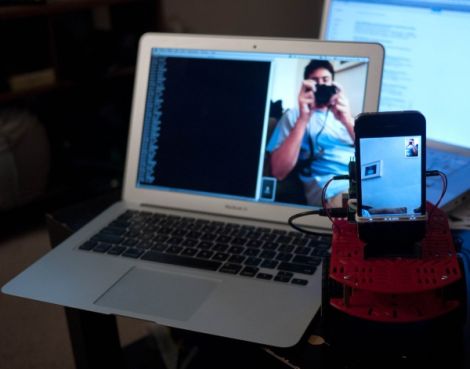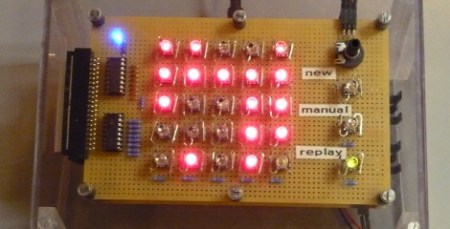Spinning DNA animation using sprites

[James Bowman] shows a way to use sprites to simulate parts of DNA moving in 3 dimensional space. The animations are driven by an Arduino board and Maple board, which allows a comparison of the processing differences between the two. [Thanks Andrew]
Tiny Pong

This Pong game is so small (translated), you’ll be fighting over who gets a closer view of the screen.
More CNC halftone pieces

[Christian] made a bunch of halftone pictures with a CNC mill. He took the concept from [Metalfusion’s] halftone projects and ran with it. He even posted some video of the machining process (turn down your sound before viewing this one).
Most useless machine

[Jumbleview’s] take on the most useless machine makes the entire lid shut off this rocker switch, instead of using a separate arm for the task.
7400 rectifier

[Noel] is using a couple of 7400 chips in an unorthodox way to form a full-wave rectifier. They’re not powered, but instead used for the internal diodes. It’s his entry in the 7400 contest.
















